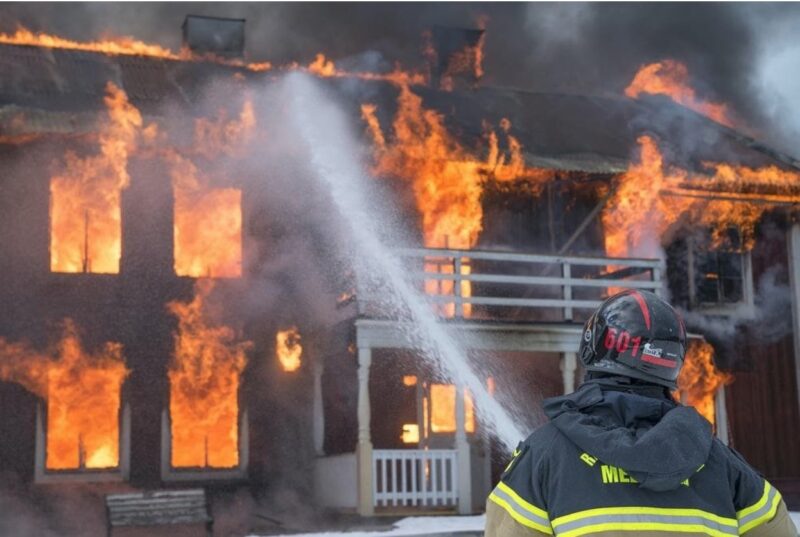A Detailed Overview of Different Types Of Fire Damage

There are several different kinds of fire accidents that can take place inside a home or a building. Not every fire accident is the same, but they can spread very quickly and cause a lot of harm.
Using the wrong fire extinguisher can also lead to more harm if you do not have the proper knowledge. Hence, it is a good idea to always be aware of fire accidents that can happen anytime, anywhere.
Undoubtedly, fire can be incredibly injuring and devastating because not only does it ruin material things, but it can also kill people. Other than damaging lives, equipment, and buildings, a fire accident can interrupt business activities. Hence, fire prevention is the best way to ensure that the flames do not engulf your entire property or impact you or your business.
Having a contingency plan for dealing with any unfortunate fire-related events is crucial. Unfortunately, even if a fire does occur, knowing how to attack the situation beforehand can stop it from spreading quickly. Even though containing a fire is not an easy task, knowing about the different hazards and risks can help.
It is important to understand that not every file is the same. There are six different classes of fire accident types, and each of these needs to be controlled in a specific way.
Let’s shed some light on the six different kinds of fire accidents that may occur:
Solids (Class A)
The first type of fire accident is a Class A fire involving solids. This could include paper, cardboard, manufacturing, and office materials. It could also be fittings, fixtures, furniture or even building structural materials. These solid materials act as fuel for fire and are one of the most common types that occur all across the globe.
Since they are the most common type, it is pretty hard to eliminate fully. Focusing on waste reduction and keeping your materials as packed as possible may help minimize the risks of a Class A fire. In this case, it is wise to use a water extinguisher because this type of extinguisher can put out most fires linked with solids. However, if you are near electrical equipment, then water can be a dangerous conductor.
Liquids (Class B)
Class B fires involve liquid and fluids. This could be chemicals, cleaning liquids, inks, adhesives, solvents, and even paints. Sometimes chemicals and liquids found in several workplaces are explosive and flammable, which becomes the main fuel source for the fire.
Even though Class B fires are not incredibly common, they do cause many fatalities because they are more deadly than a class A fire. You should always be very careful around flammable liquids, especially at the workplace. Hazardous substances should always be handled according to standards and legal requirements. Labeled containers and safe storage is also a good way to lower the risk of Class B fires. A form or powder extinguisher works best for flammable Class B fires.
Gases (Class C)
Class C fires involve gases such as natural gas or LPG. Any other flammable or explosive gas can also lead to a Class C fire. This is why gas is considered to be incredibly dangerous and a fire risk. Gases should always be in a safe storage area with sealed containers to ensure it is being used properly and safely. A dry powder extinguisher this the best type of distinguisher to put out a Class C fire.
Metals (Class D)
Some metal materials are combustible, which is why they can cause a class D fire. Since they are good conductors, they can also help spread a fire that leads to a bigger problem. When metals melt at high temperatures due to the heat of the fire, they become a proper structural element which only helps the fire increase. A dry powder extinguisher is a perfect way to tackle a Class D fire.
Electrical (Class E)
Class E fires are more popularly known as electrical fires because electricity is the fuel in this situation. Any electrical equipment that is installed incorrectly or in a mixture with moisture or water can be a fatal experience. An electrical fire should never be resolved by a water extinguisher. Instead, a dry powder distinguisher is a correct way to go.
Cooking Fats & Oils (Class F)
Excessively hot deep fat frying or flammable oil spills can be dangerous, especially if they are combined with a heat source. They can result in a Class F fire. A wet chemical extinguisher works great to extinguish a Class F fire.
What To Do In Case Of A Fire?
Since fire damage is incredibly unsafe and time-sensitive, it is important to call emergency services to help you put out the fire. Moreover, home and commercial fire damage restoration companies such as 911 Restoration of Dallas can help turn your property to its former state in no time!



